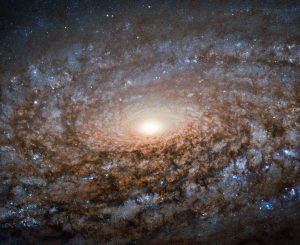Preziosi filati di soffice lana per NGC 3521

Questa immagine della galassia a spirale NGC 3521 ripresa dal telescopio Hubble rappresenta un membro di una classe di galassie nota come spirali flocculente.
Come altre galassie flocculente, NGC 3521 non ha una struttura ad arco ben definita nei suoi bracci di spirale, ma soffici macchie di stelle e polvere appaiono qua e là attraverso il disco, conferendole un aspetto “lanoso”, morbido.
“Ciuffi” di stelle sono disposti generalmente in una forma a spirale, ma luminose regioni ricche di stelle possono anche apparire come bracci di spirale brevi o discontinui.
NGC 3521 si trova a quasi 40 milioni di anni luce di distanza nella costellazione del Leone. L’astronomo William Herschel scoprì l’oggetto nel 1784.
[ Barbara Bubbi ]
https://www.nasa.gov/image-feature/goddard/hubble-shears-a-woolly-galaxy
Image credit: ESA/Hubble & NASA and S. Smartt (Queen’s University Belfast)
Lascia un commento